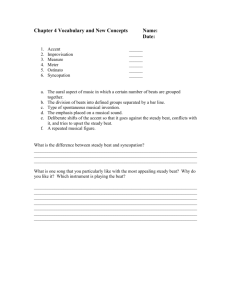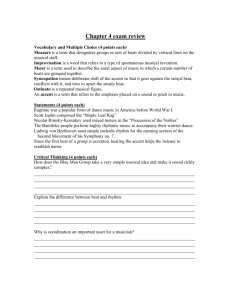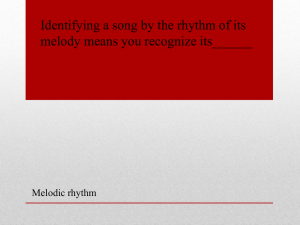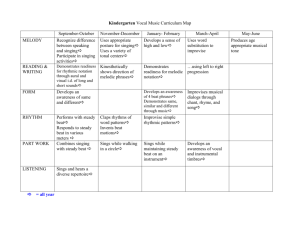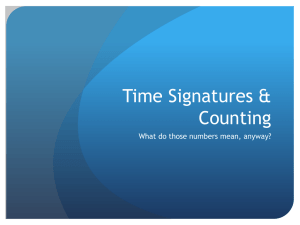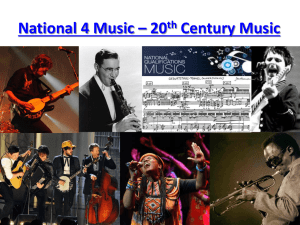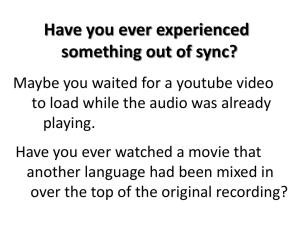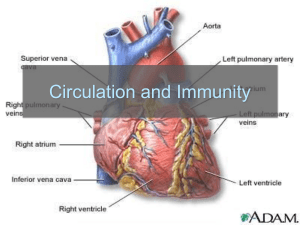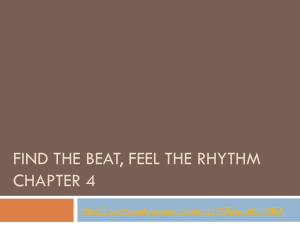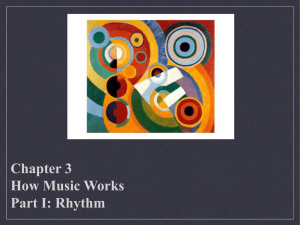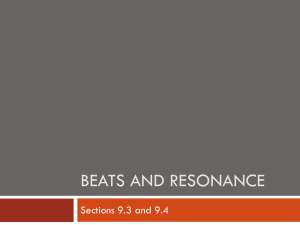Chapter 4 Music Theory Review: Rhythm & Meter
advertisement
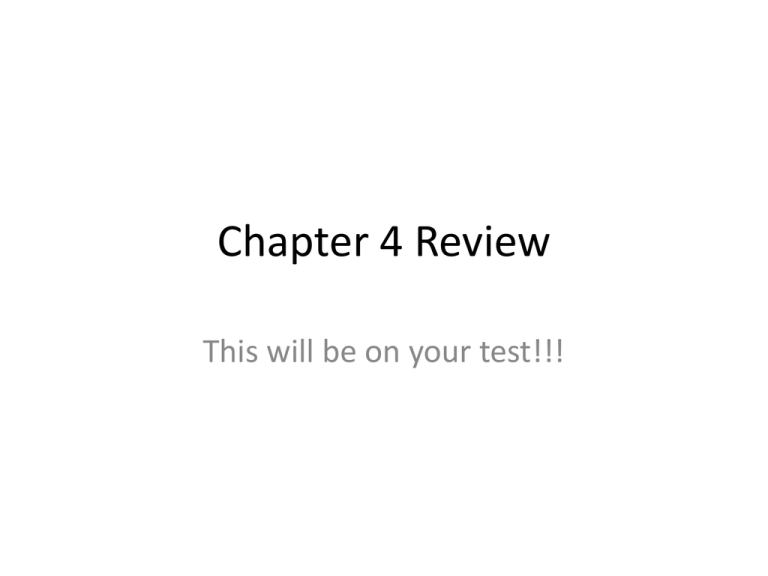
Chapter 4 Review This will be on your test!!! Chapter 4 Review Vocabulary • 1. The aural aspect of music in which a certain number of beats are grouped together. • 2. The division of beats into defined groups separated by a bar line. • 3. Type of spontaneous musical invention. • 4. The emphasis placed on a musical sound. • 5. Deliberate shifts of the accent so that it goes against the steady beat, conflicts with it, and tries to upset the steady beat. • 6. A repeated musical figure Chapter 4 Review Questions • 7. What is the difference between steady beat and syncopation? • 8. What are “found instruments?” • 9. What rhythmic device is used in ragtime? • 10. What does “mixed meters” mean? • 11. Explain the feeling that syncopation gives music. What causes this feeling? • 12. Based on what you know, how could you explain the importance of coordination to a musician? • 13. What is the relationship between beat and rhythm? • 14. In your opinion, which characteristics of STOMP’s music appeal to today’s audiences? Chapter 4 Review Vocabulary • 1. The aural aspect of music in which a certain number of beats are grouped together. meter • 2. The division of beats into defined groups separated by a bar line. measure • 3. Type of spontaneous musical invention. improvisation • 4. The emphasis placed on a musical sound. accent • 5. Deliberate shifts of the accent so that it goes against the steady beat, conflicts with it, and tries to upset the steady beat. syncopation • 6. A repeated musical figure ostinato Chapter 4 Questions • 7. Steady beat is the main beat. Syncopation accents a weak beat, creating a feeling of imbalance in the steady beat. • 8. Ordinary objects that can be used to make sound. • 9. Syncopation is used. • 10. “Mixed Meters” means using both duple and triple meters in a piece. • 11. Syncopation creates a feeling of imbalance or something unexpected. The feeling is caused by accents falling on weaker beats or between the main beats. • 12. Coordination is an important asset to musicians because they are often doing several tasks at the same time. • 13. Beat is the steady pulse. Rhythm is the way the music moves using long and short sounds. • 14. YOUR OWN ANSWER
